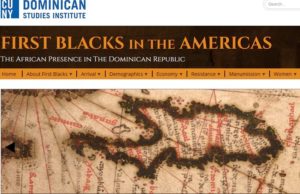Suicide and race in Guyana: We do not live single-issue lives
STAFF WRITER January 3, 2017
Savitri Persaud was born in Guyana and spent part of her childhood in Moblissa, off the Linden Highway; and in Belle Vue, West Bank Demerara. She is a PhD candidate in the Department of Social and Political Thought at York University in Toronto, Canada. Her doctoral dissertation examines discourses of disablement, mental health, and violence in Guyana and the Caribbean.
Discussing suicide in Guyana is a complex and urgent issue. Al Jazeera’s The Stream recently dedicated an episode intended to explore the high suicide rate in the country. I was in the company of three other panelists who were invited to speak on the issue.
When asked if there was any one part of the population that is more likely to experience suicidal thoughts and suicide, I responded by saying no and that given the history of racial tensions in Guyana, we should be cautious of attributing suicide to any one racialized group alone, but instead look at how suicide is a symptom of larger social, political, and economic problems in Guyana.
One of the panelists later indicated that 80% of the reported suicides are carried out by Indo-Guyanese. I interjected and acknowledged her point that there are higher rates reported in Indo-Guyanese communities.
I am aware of these statistics and should have prefaced my earlier remarks. I admit it is crucial to recognize these high numbers among Indo-Guyanese if we are to comprehensively address Guyana’s high suicide rate.
My overall point, however, was to assert that we must also be vigilant and careful in our discussions to avoid sentiments and practices that might attribute suicidal behavior and suicide to any one ethnic group on the grounds of essentialisms where suicide might come to be viewed as an issue that is inherent to the Indo-Guyanese experience, that “this is just something Indians do” or that “this is just how Indian culture stay”. Because of the short nature of The Stream, it was difficult to thoroughly explicate this.
The conversation was, at times, a passionate one where my fellow panellists expressed great concern and demonstrated incredible resolve in tackling the high incidence of suicide in Guyana.
My response was not intended to dismiss these numbers or the examination of race; nor was I, as some have said, “defending my race”.
Yes, there are higher suicide rates reported in Indo-Guyanese communities. However, it is too simplistic and deterministic to boil down causes to any one category of difference/identity, which according to some of my research participants is sometimes expressed by the general population.
Through my discussions with psychiatrists, family doctors, psychiatric nurses, community workers, NGO leaders, and religious leaders in Guyana, some reported hearing opinions from the general public that referred to suicide as an “Indian people thing”, but as helping professionals they emphasized that suicide is a multifaceted issue, which extends through and beyond discussions of race.
Indo-Guyanese should not be talked about as a monolith. They are a diverse population: across gender, class, sexuality, ability, age, religion, place of residence and so on.
It is, therefore, important to go into these communities and to learn with and from them, not only talk at them. We must acknowledge too that these communities also have the solutions to the issues that affect them, but that they may lack the necessary resources to thoroughly address these problems.]
To better understand the issue, I believe it is crucial to examine the intersectionality and co-occurrence of a multitude of factors.
This requires asking specific questions and examining racism and discrimination; mental illness, disability, and associated stigmatization; health disparities; rural living conditions; domestic and gender-based violence; economic marginalization; drug and alcohol abuse; personal, interpersonal, and intergenerational trauma; the role of religion and spirituality; feelings of isolation and hopelessness; HIV/AIDS stigma; the use of poisonous pesticides in agricultural communities; and discrimination against LGBTQ communities, among other factors.
There was an important 2014 study on suicide and suicidal behavior conducted in Guyana by researcher Serena Coultress of Maastricht University and supported by the Guyana Foundation. In a Stabroek News article reporting on the study, it was found that “in Guyana, the role of ethnicity in suicidality has been overemphasized.” According to the findings: “Participants in the study were said to have also highlighted their belief that the suicide rate may be higher among the Amerindian population, but this remains undocumented due to their largely isolated locality. Additionally, when suicide is recast to include ‘suicidal behavior’ inclusive of reckless behavior, the differentiation between Afro-Guyanese and Indo-Guyanese was less obvious… ‘Although problematic gender roles were found to be amplified within Indian and rural communities, it was impossible to say with any certainty whether these gender roles were driven by the Indo-Guyanese culture, or the rural location of many predominantly East Indian communities’.”
The study also suggests “suicide in Guyana is linked to poor coping skills and a cycle of violence that includes murder-suicide, interpersonal violence, corporal punishment and child sexual abuse…
‘These are inextricably linked, fuelling one another, and are amplified by predominant notions of masculinity, family dysfunctions, sexual inequality and alcohol abuse all of which are major catalysts for the poor coping strategies found across ethnic groups.’”
Especially in cases of murder-suicide where women are often killed and men go on to take their lives by suicide violence of this kind, which occurs across race, occurs as a result of a learned, dominant masculinity where men seek to exert control over the way their partners live and, ultimately, exercise power and violence over how their partners die.
In Canada, where I am completing my studies, the rates of suicide among some First Nations communities are high.
To fully understand the problem, we must look to the history of ongoing colonialism and racism and the social, political, and economic conditions and disenfranchisement that some of these communities continue to face in Canada.
Hitting closer to home here in the diaspora, a foundational Ontario mental health study published in 2015 revealed that the incidence rate of psychotic disorders among first generation immigrants of Caribbean origin was nearly 60% higher (94.4 per 100,000 persons) than that of the general population in the province (55.6 per 100,000 persons), suggesting that specific immigrant groups are placed at a greater risk for developing psychiatric disorders (Anderson et al., 2015).
My future research asks questions about why people of Caribbean origin diverse people of different races, religions, genders, economic backgrounds, abilities, and sexual orientations living in Ontario experience these higher rates, not on account of racialized and cultural essentialisms, but through examining the social causes of mental illness, like some but not all of those factors mentioned earlier, that people of Caribbean origin might encounter in Ontario.
On a personal note, suicide has touched my family. I have Indian, African, and Portuguese heritage; and outwardly, I look Indo-Guyanese. One of my uncles ended his life by suicide.
According to my family, the reasons for his death were compounded by a number of life circumstances. He died before I was born, but the stories of his life of how he so profoundly and positively affected my father were told throughout my childhood and constitute some of my earliest memories. To this day, as recent as Christmas dinner, my father fondly remembers the period when he lived with his older brother for a time in Albouystown; of the life lessons he learned from a man he so admired and respected; of the life lessons that he now passes on to his own children.
As a young girl in Guyana, I knew what the traumatic and deadly consequences of “drinking poison” were, but I also knew that the reasons for doing so were not easily reduced to a single issue.
We must resist and refuse the kneejerk response where suicide is stereotyped, culturalized, and essentialized on the bodies of Indo-Guyanese because this creates further stigma in addressing the complex issues at play.
We need a national, multisectoral, and intersectional strategy to holistically address Guyana’s high suicide rate, which will benefit all Guyanese; it is larger than any individual factor. Audre Lorde, a Black feminist and civil rights activist whose parents hailed from Barbados and Carriacou, reminds us, “There is no such thing as a single-issue struggle, because we do not live single-issue lives.”
Suicide and race in Guyana: We do not live single-issue lives











